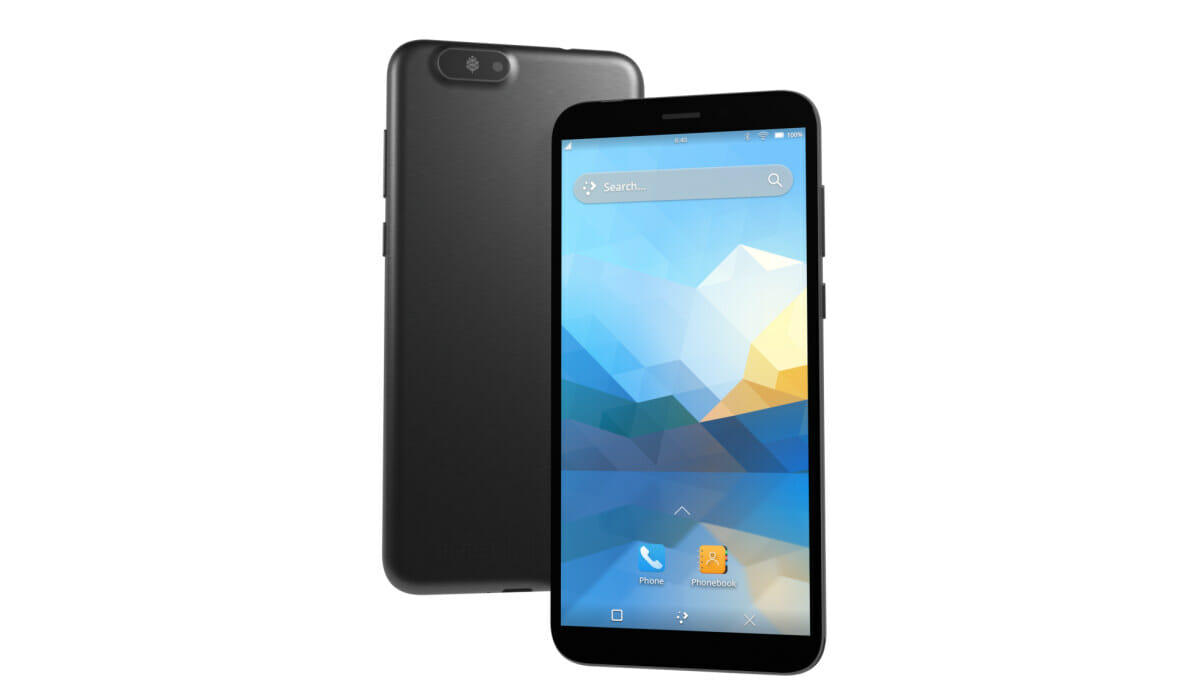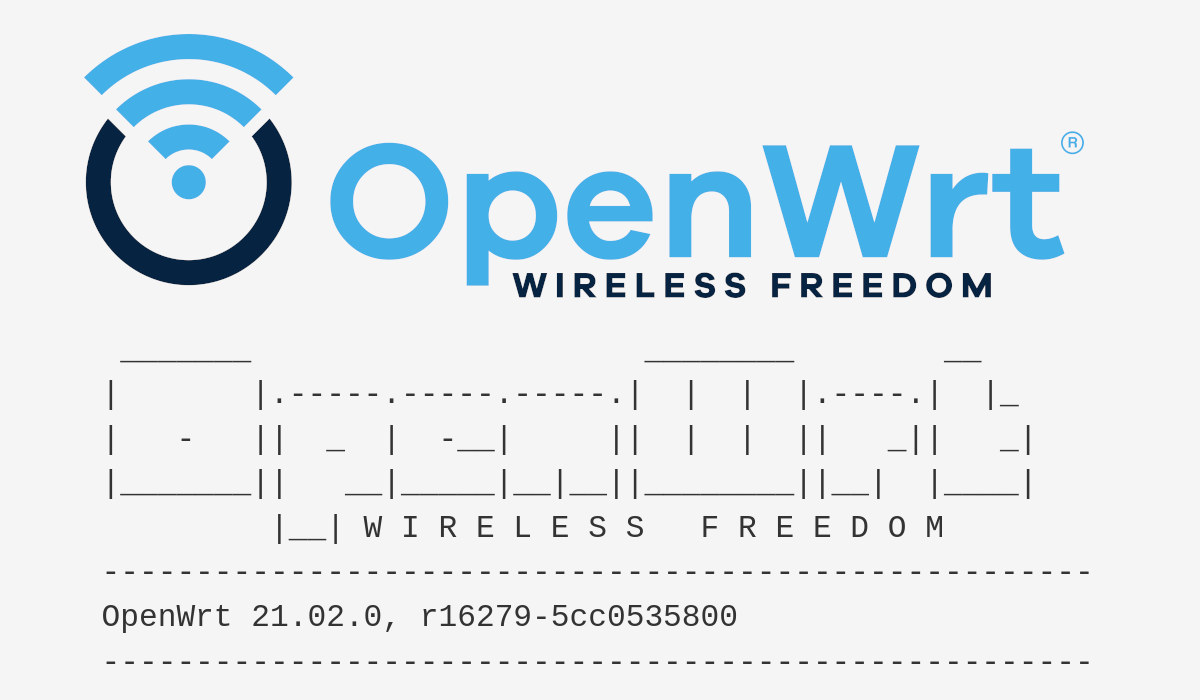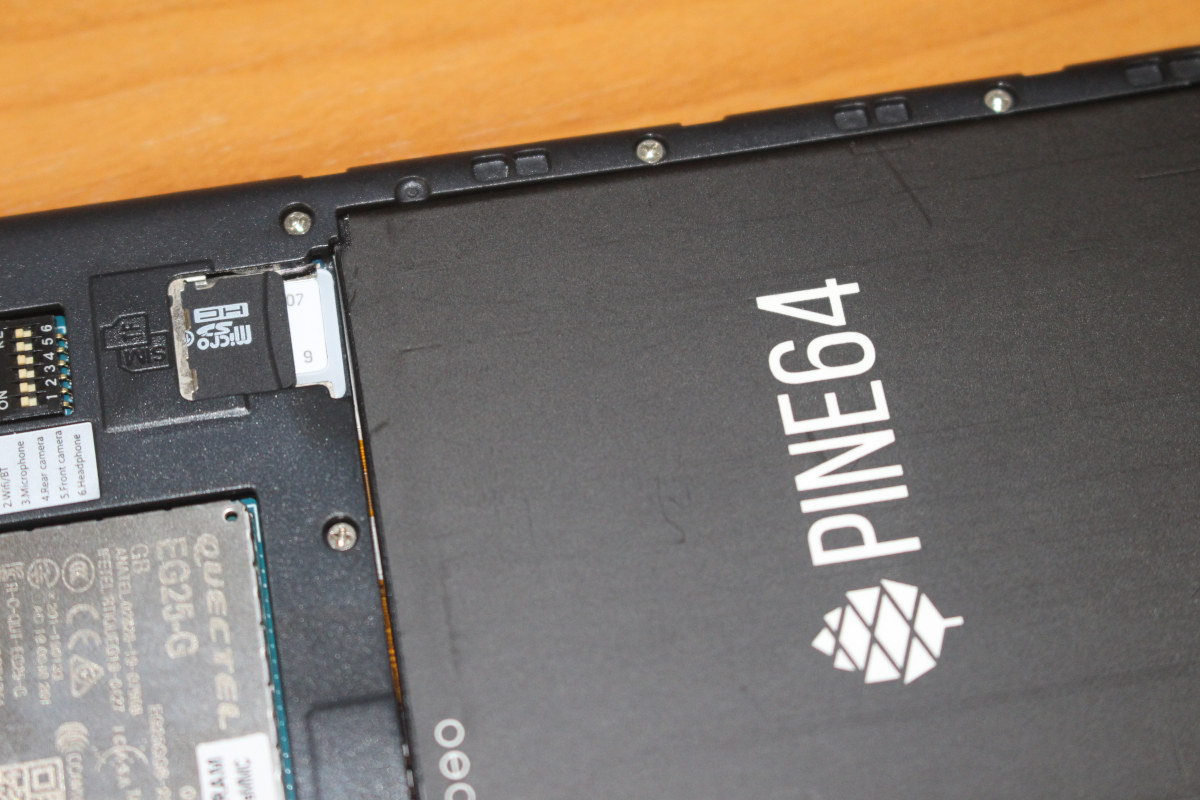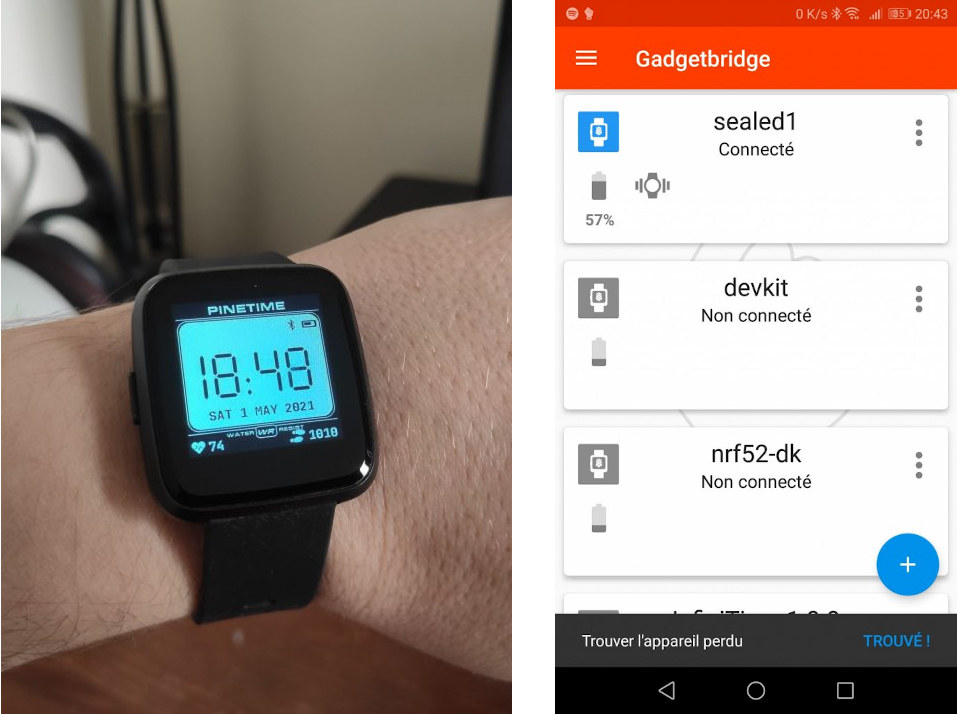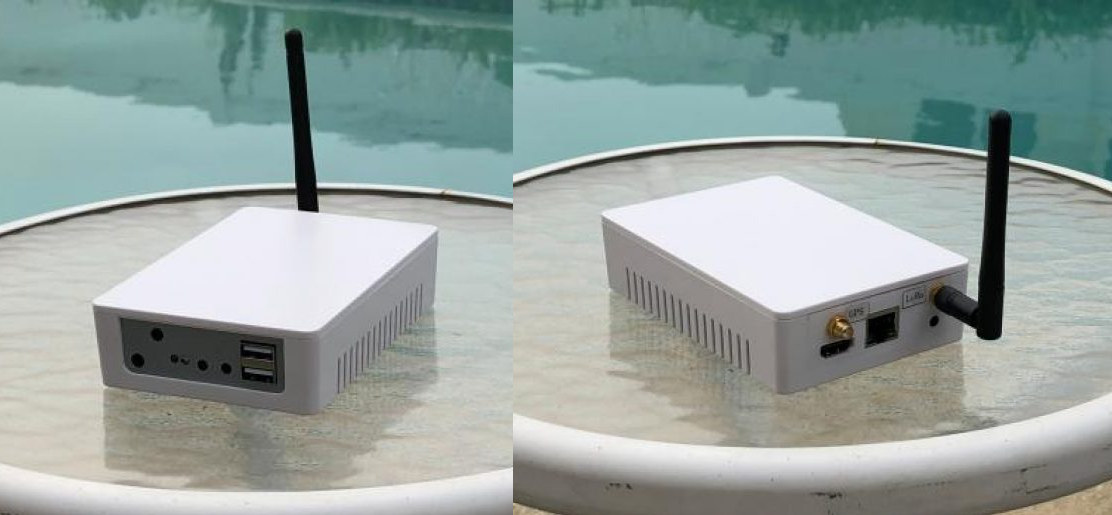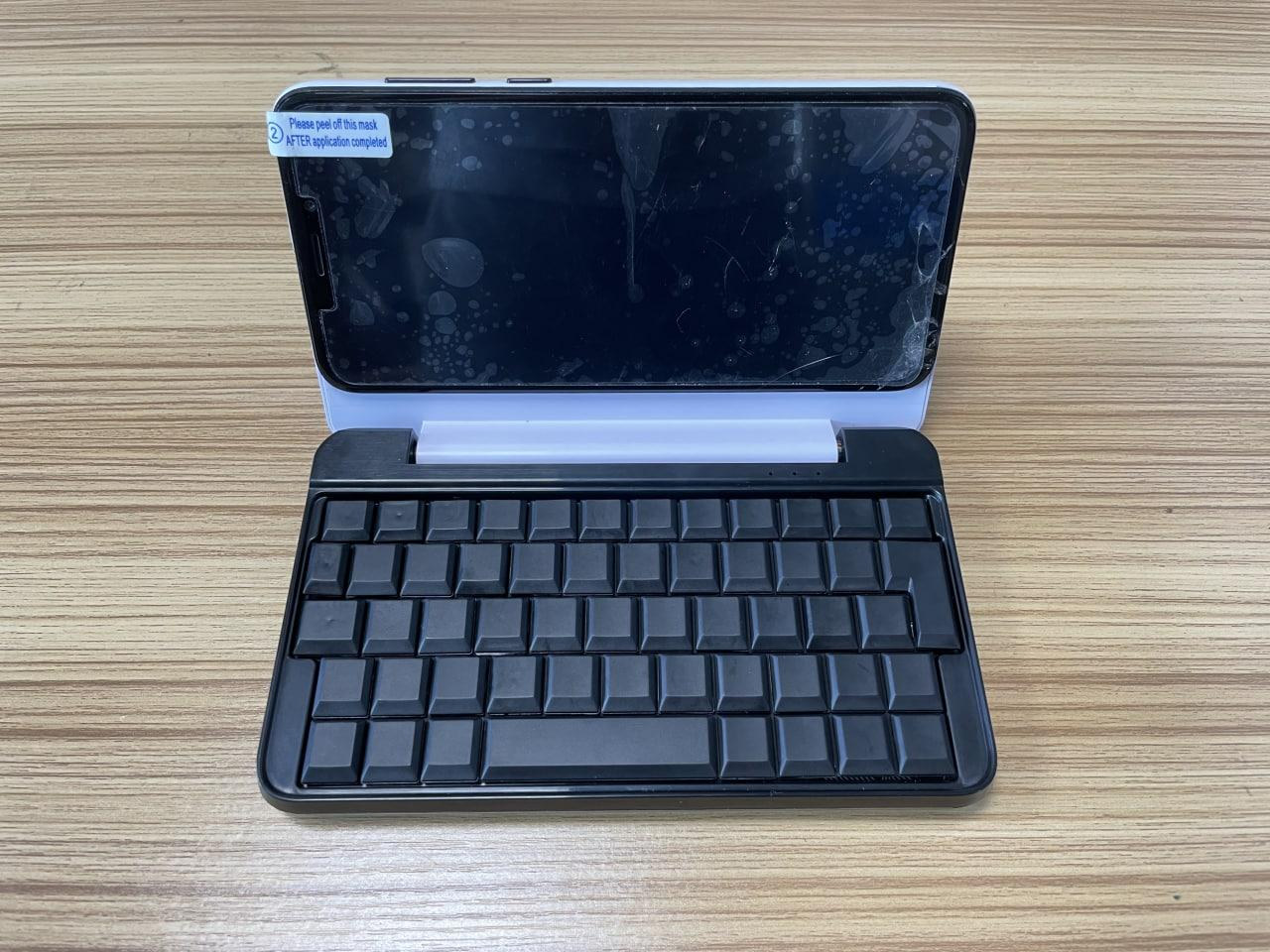Pine64 has now announced the PinePhone Pro Linux smartphone with a Rockchip RK3399S hexa-core processor clocked at 1.5 GHz, that’s a power-optimized version of the popular Rockchip RK3399 processor. It will provide a noticeable upgrade to the PinePhone Linux smartphones launched in November 2019, which, by today’s standards, is quite underpowered. Besides the faster processor, PinePhone Pro also comes with 4GB RAM and 128 GB storage which should make it a better candidate at mobile desktop convergence, as well as a 5.95-inch display with 1440×720 resolution, a 13MP rear camera, a 5MP front-facing camera, and more. PinePhone Pro specifications: SoC – Rockchip RK3399S with an hexa-core processor comprised of 2x Cortex-A72 core @ up to 1.5 GHz, 4x Cortex-A53 cores, Arm Mali T860 quad-core GPU @ 500Mhz System Memory – 4GB LPDDR4 @ 800MHz Storage – 128GB eMMC flash storage, MicroSD slot Display – 5.95-inch 1440 x 720 in-cell IPS with […]
OpenWrt 21.02 released with WPA3, HTTPS, TLS enabled by default
OpenWrt 21.02 has just been released with higher security with WPA3, HTTPS & TLS enabled by default, as well as initial support for the Distributed Switch Architecture (DSA), the Linux standard for configurable Ethernet switches. OpenWrt is the most popular open-source Linux distribution for routers and entry-level Linux-capable embedded systems, and the latest release includes over 5800 commits since the release of OpenWrt 19.07 in January 2020. WPA3 was already supported in OpenWrt 19.07, but not enabled by default, OpenWrt 20.02 changes that, together with TLS thanks to trusted CA certificates from Mozilla. That means LuCi interface, wget, opkg package manager can all support HTTPS out-of-the-box. Note that HTTPS redirection can be disabled for LuCI in the configuration files. Another security change is that SELinux is now supported by OpenWrt, but not enabled by default. OpenWrt 21.02’s DSA implementation replaces the current swconfig system, but not all targets have been […]
LibreELEC 10.0 minimal Linux OS for media playback released with Kodi 19.1
While most TV boxes and SBCs nowadays ship with or support a version of Android, people who just want the best viewing experience may prefer to switch to a Linux distribution such as LibreELEC or CoreELEC. The good news is that LibreELEC 10.0 has just been released with Kodi 19.1 and Linux 5.10 LTS. LibreELEC 10.0 is said to work well for Allwinner, Rockchip, and “Generic” Intel/AMD devices, while the Raspberry Pi 4 release’s codebase is rather new, and there may still be a few rough edges. Support for the previous generation Raspberry Pi boards has been dropped, and there’s no support for Amlogic platforms as CoreELEC already provides good support. Since LibreELEC 10.0 is based on Kodi 19.1, it benefits from the same features as Kodi 19 “Matrix” release including AV1 video decoding, a new skin, HDR support, and more. LibreELEC 10.1 support a wide range of single board […]
PineNote is a community supported 10.3-inch e-Reader based on Rockchip RK3566 SoC
We’ve covered several e-readers in the past, but the PineNote 10.3-inch e-reader will be a bit different, as the hardware & software will be entirely developed by the community like other Pine64 platforms such as Pinebook Pro, PineCone, Rock64 single board computer, etc… Based on the Rockchip RK3566 quad-core Cortex-A55 processor, PineNote will be one of the fastest e-readers on the market, and leverage the code already written for Quartz64 single board computer, including mainline Linux support. PineNote (preliminary) specifications: SoC – Rockchip RK3566 quad-core A55 processor with Mali-G52 EE GPU, 0.8 TOPS NPU (AI accelerator) System Memory – 4GB of LPDDR4 RAM Storage – 128GB eMMC flash Display – 10.3-inch panel with 1404×1872 resolution (227 DPI), 16 levels of grayscale, front light with cool (white) to warm (amber) light adjustment, capacitive glass layer for finger touch-based input, and a Wacom electromagnetic resonance layer (EMR) for EMR pen input. There’s […]
How to use PinePhone as a mobile hotspot
I’ve recently started using my Android phone as a mobile hotspot with mixed results so instead, I’ve switched to using PinePhone as a hotspot with Manjaro Arm Linux with Plasma Mobile instead, and performance seems much more stable now. Early this year, I received Pinephone with PostMarketOS beta, and after playing with it a bit I did not do much with it so far. But in recent times, I’ve been staying in various places without WiFi, so I purchased a lost cost SIM card with a one-year cellular data plan to be able to work from any location using my Android 10 smartphone (Huawei Y9 Prime 2019) as a mobile hotspot. It works most of the time, but sometimes I have massive packet loss, and the only way to recover is to turn off and on the hotspot, and in some cases even reboot the phone. Playing with settings on […]
Why you should request open-source software for your IoT devices
I usually think of open-source hardware and/or software are enabling skilled people to more easily fix bugs, improve on the design, get feedback from the community, etc… But in a world where IoT devices become more prevalent, there’s another reason why you should request open-source software: Long term support. What made me think about are two things. The first one if that I own WeLoop Hey 3S smartwatch, which I love and wear since March 2018. That’s quite a feat since most cheap devices I own often only last a few months or a year or so. I’m also used to the watch face and Weloop app interface. So what’s the problem exactly? WeLoop company closed on December 31, 2019, and while the app worked fine for about a year after that, recently I have been unable to login to the app to access my data and/or update settings for […]
PineDio indoor LoRa gateway to combine Pine A64-LTS SBC with RAK2287 LoRaWAN concentrator module
RAKwireless has offered Raspberry Pi-based indoor LoRaWAN gateways for development/evaluation purposes for several years, including the more recent RAK7246 LoRaWAN developer gateway equipped with Raspberry Pi Zero W SBC. But there’s will soon be another option, also not directly from RAKwireless, as Pine64 PineDio indoor LoRa gateway will feature RAK2287 LoRaWAN concentrator module connected to Pine A64-LTS single board computer via a custom-designed adapter board. PineDio indoor LoRa gateway preliminary specifications: SoC – Allwinner A64 quad-core Arm Cortex A53 processor @ 1.0 GHz with Mali-400MP2 GPU System Memory – Up to 2GB LPDDR3 Storage – 128Mb SPI boot Flash, MicroSD card slot, optional eMMC flash module Video Output – HDMI 1.4 up to 4K resolution @ 30 Hz Connectivity Gigabit Ethernet Optional WiFi & Bluetooth module LoRaWAN via RAK2287 mini PCIe concentrator module based on Semtech SX1302 with support for RU864, IN865, EU868, AU915, US915, KR920, AS923; external antenna GNSS […]
PinePhone Keyboard to make for a cheaper, albeit slower Cosmo Communicator
Pine64 PinePhone is a popular Linux smartphone among the developers and Linux enthusiasts’ communities and some of the most popular Linux operating systems support by the phone include KDE Plasma Mobile, PostMarket OS, Manjaro, and UBports for an Ubuntu Touch like interface. But soon, you’ll be able to use your PinePhone like a portable Linux computer, a 5.95-inch mini laptop of sorts, that’s similar to the 2-in-1 Cosmo Communicator device, but at a much lower price, albeit with lower performance, thanks to PinePhone Keyboard accessory. The PinePhone Keyboard is not quite ready yet, but Lukasz Erecinski (aka Luke) has shared the progress of the latest version of the prototype, and almost looks like a finished product, albeit we’re told another revision will be made as the tolerances on the keycaps are not suitable. Here are some of the main features we can expect from the keyboard: QWERTY keyboard (by default). […]


